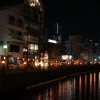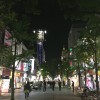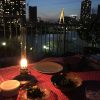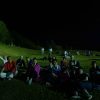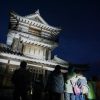Interviewer: Satomi Yamaguchi

Mende:So, today’s topic of conversation is “What is your favorite season of the year?” So… What is your favorite season of the year?
Yamaguchi:Spring. Especially early spring. Plants are shooting up, budding cherry blossoms, trees covered in pastel pink flowers. It makes me feel so excited.
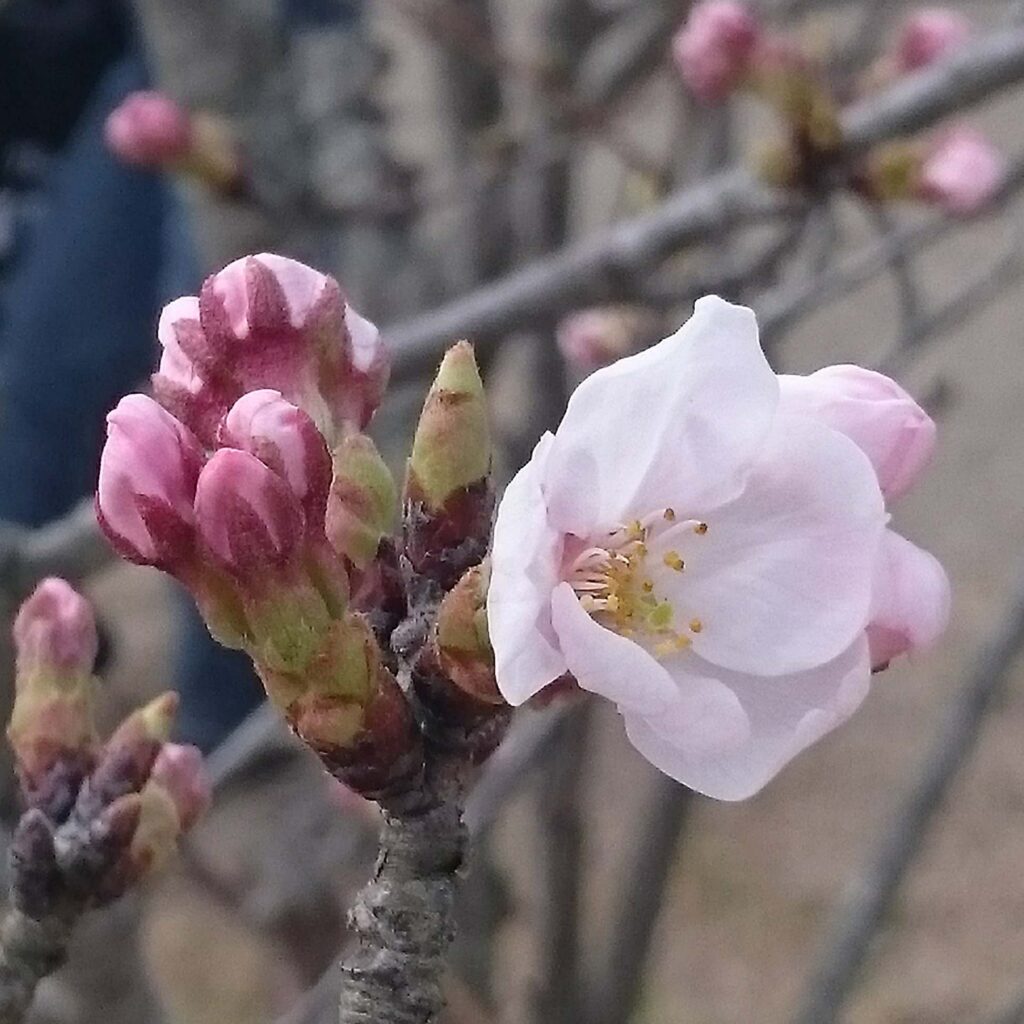
Mende:You could almost say late winter. Where did you grow up? Did you wait out long, dark winters for springtime?
Yamaguchi:I am from Tokyo. Since I take care of many plants, I have really become more conscious of the seasons. What is your favorite season of the year?
Mende:When I was growing up it was probably summer. During the last few years of elementary school I took up playing music, after that I really began to enjoy the fall. The turning of colors and preparations for the long and lonely winter ahead is very moving. I think I’m a romanticist. The fish tail rows of light, fluffy clouds are very different from the aggressive thunder clouds of the summer season. These clouds reveal the first glimpses of autumn. Although, I really don’t dislike any season of the year, which is my real answer, but I do love the cultural atmosphere of the fall season. I think it is the real season of love.
Yamaguchi:I think the saying goes that people fall in love and the spring and break up in the autumn.
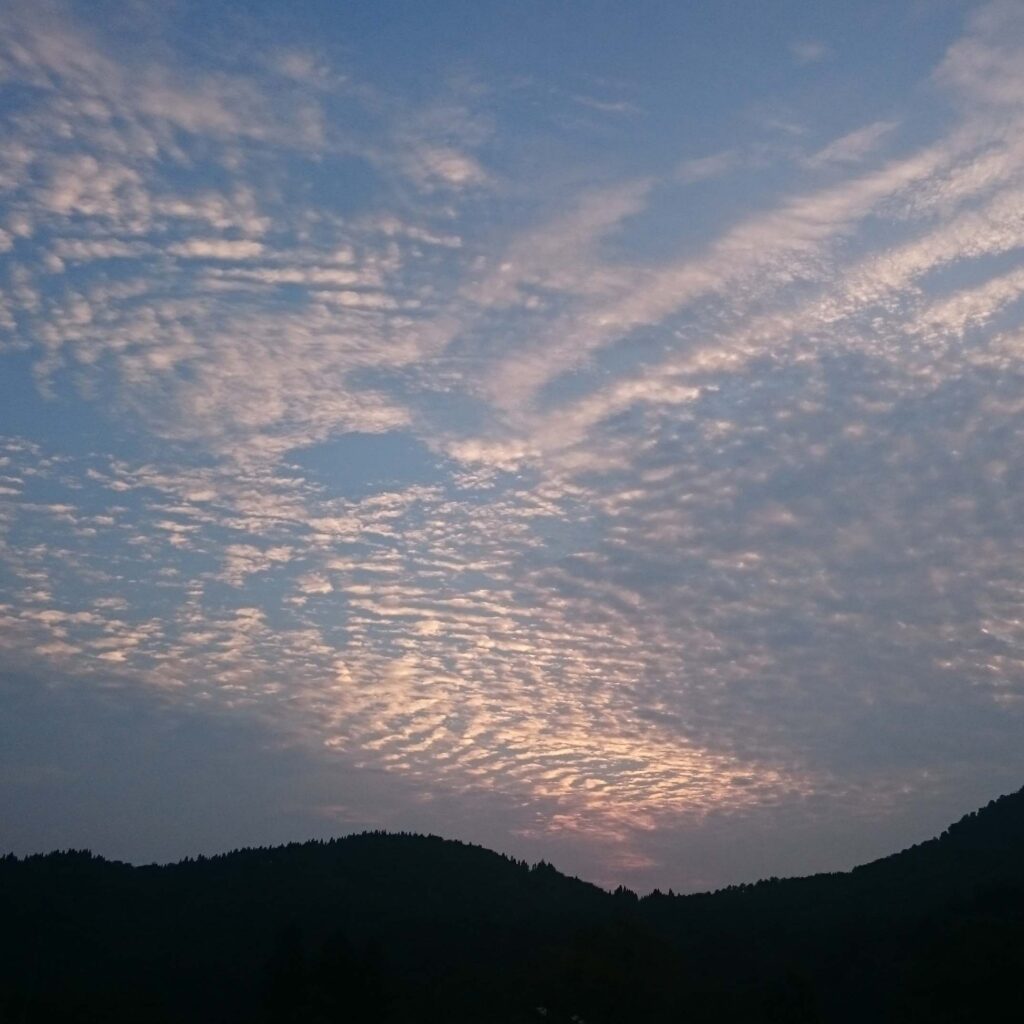
Mende:When I was younger I never liked the confused and hazy feeling of anticipation during the spring. I`m not sure when, but sometime as an adult I started to like springtime.
Yamaguchi:What changed your mind?
Mende:Age, probably. I like to take walks and I look on the ground for small, budding flowers. Finding one makes me really happy. I have a large-flowering magnolia at home with big white flowers that bloom. I eagerly check it everyday during the season when it has so many buds. When my flowering citron or olive tree blooms all different types of bees start buzzing around.
Yamaguchi:Watching the bees pleasantly buzzing around makes me feel happy, too.
Mende: I think the seasons of the year start with spring and end in the winter. Spring is a season of beginnings.
Yamaguchi:Yes, I think so, too. Although because of the COVID-19 things will probably change is what the news media is saying. I think starting the school year in the fall seems very strange to many Japanese. I think this is because we put so much importance on the seasons of the year.
Mende:Even in the desert there are seasons. Singapore even has seasons, but I think the sentiment placed on the seasons of the year by the Japanese is very different. Japan has four very distinct seasons and we are very lucky to experience and feel these changes. Our new office has very big windows! Visually, it is very open like an open-air veranda. The scenery is always changing.
Yamaguchi:I love to eat my lunch and just enjoy the scenery. Oh! By the way, do the seasons affect what you eat?
Mende:I really like eggplant, but recently you can buy it anytime of the year. However, that seems to be the case with many things. We can buy many things out of season, now.
Yamaguchi:At home, my strawberry plant is ripe and ready to eat, but many children think it is a winter food. Modern life is very convenient, but confusing. I really want to be more conscious of the seasons.
Mende:What season do most Japanese prefer? Probably spring. I don’t think many really like winter, is my impression.
Yamaguchi:I think it is probably dispersed evenly, but it would be an interesting questionnaire.
Mende:Let’s have a go with the LPA staff. I wonder how the Singapore and Hong Kong staff will respond?
Results of Questionnaire

Results of the internal LPA staff (Tokyo, Singapore, Hong Kong) questionnaire show differences depending on location. Nobody on the Hong Kong staff selected spring. In Singapore the rainy season was also selected.
Yamaguchi:What kind of lighting is designed to be conscious of the seasons? I think some lighting to go along with the summer sunset would be nice.
Mende:If there is a place that already has natural light, simulating these effects with artificial light will just look fake. Sometimes it is simulated in underground spaces. Simulating natural light is not just about color temperature, but creating shadows is also important. There are winter shadows and spring shadows. Recreating the shadows is the real fun and challenge. Lately, because of the Corona virus, you can really see the stars in Tokyo. A long time ago, people used to tell the seasons of the year by the constellations.
Yamaguchi:I wish I could be more perceptive to these types of changes in daily life. I think some type of lighting could be designed in order to become more conscious of the seasons.
Mende:Do you mean lighting that will make you want to view the stars?
The name for the installation at Meiji Shrine during nighttime visitation hours, “Shadow Illumination,” is an interesting word choice. By burning torches, the design seems to bring to light the dark shadows. It might be interesting if there was an artificial light that could make us realize that we could never beat the grandeur of natural light. Did you know that if you darken your room, moonlight will shine in.
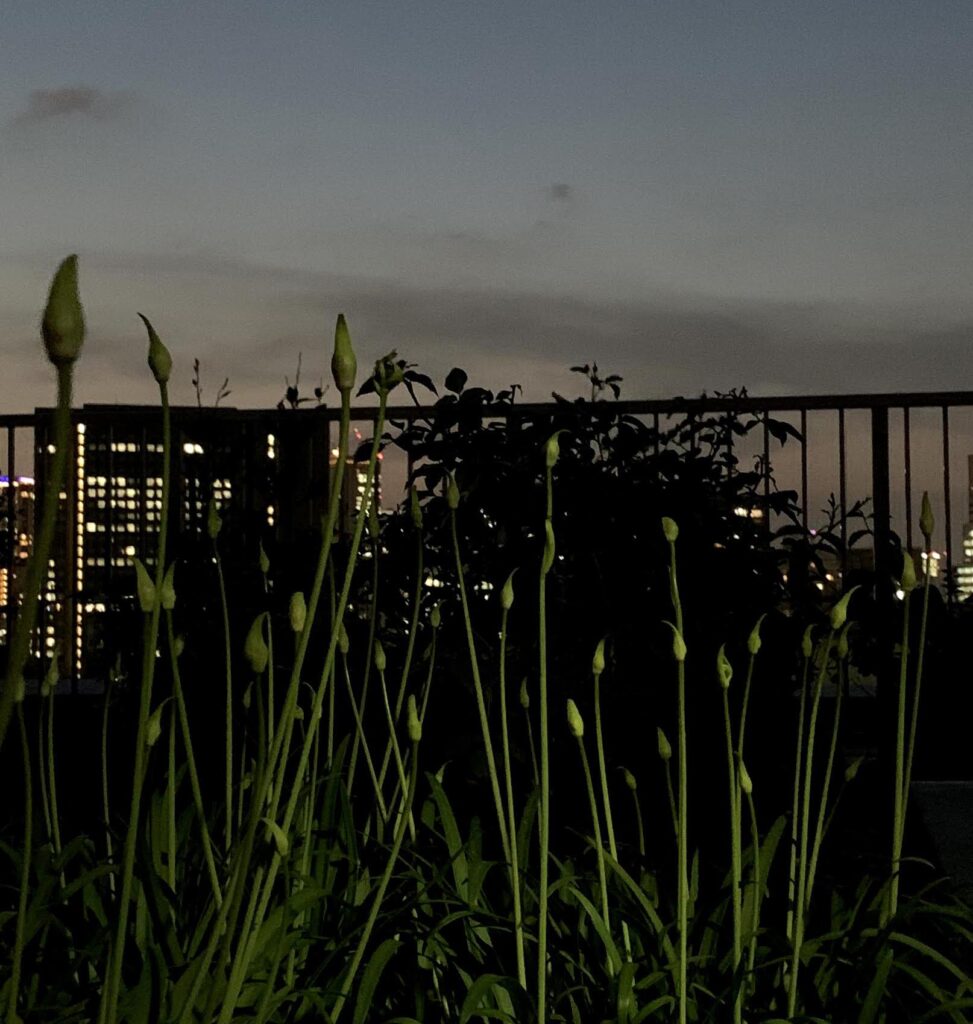
Yamaguchi:I never thought I would be able to experience moonlight in my own home. At home I mounted spotlights by the window to simulate moonlight, but I really want to experience real moonlight.
Mende:During the Heian Period they really appreciated the moon, especially the light reflected when the moon was shining on white sand. Moonlight must also have been a seasonal experience.
Yamaguchi: I really want to become more conscious of the season throughout the year. Thank you for our talk today.






